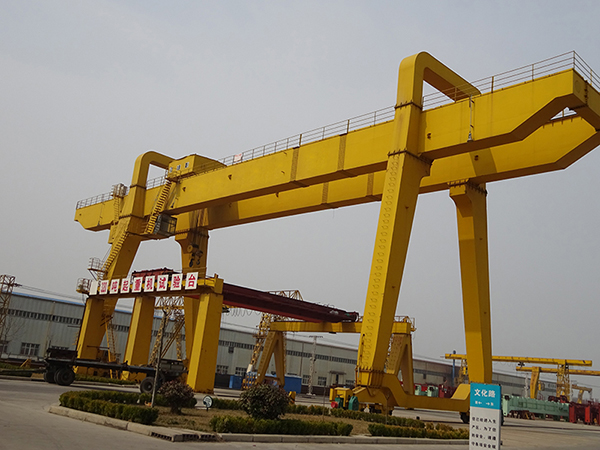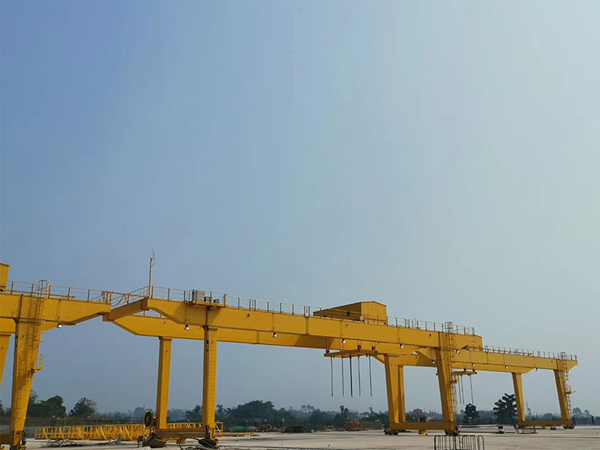A gantry crane 30 ton, with its formidable lifting capacity, stands as a linchpin in the realm of heavy-duty material handling. To ensure this workhorse operates at peak performance and maintains its longevity, a comprehensive and proactive maintenance regimen is imperative. This guide delves into the intricacies of maintaining a gantry crane 30 ton, from routine inspections to specialized component care, providing a blueprint for sustaining operational excellence.

Routine Visual Inspections
The cornerstone of gantry crane maintenance lies in routine visual inspections. Operators and maintenance personnel must meticulously examine all critical components. This includes structural elements, electrical systems, mechanical connections, and safety features. Any signs of wear, corrosion, or damage should be promptly addressed.
Lubrication and Greasing
Proper lubrication is the lifeblood of a well-maintained gantry crane. Regular greasing of moving parts, such as pulleys, sheaves, gears, and bearings, is paramount. Utilizing the appropriate lubricants and adhering to crane manufacturer recommendations ensures optimal performance and reduces friction-induced wear.
Electrical System Checks
The electrical system of a gantry crane is a complex network of wires, connections, and controls. Regular checks of wiring integrity, insulation, and connections are crucial to prevent electrical issues. This includes inspecting control panels, limit switches, sensors, and ensuring that there are no exposed wires or loose connections.
Structural Integrity Assessment
Gantry cranes are subjected to significant loads and stresses. Regular assessments of the structural integrity are vital. This includes inspecting the main beams, crossbeams, legs, and connections for signs of cracks, deformation, or corrosion. Any anomalies must be promptly addressed to prevent further deterioration.
Hoisting Mechanism Inspection
The hoisting mechanism is the heart of the gantry crane’s lifting capability. Regular checks of the wire rope or chain, hooks, and drum are essential. Ensuring that there are no signs of fraying, kinking, or distortion in the hoisting components is crucial for safe and reliable lifting operations.
Brake System Evaluation
The brake system of a gantry crane plays a pivotal role in ensuring controlled stopping and preventing unintended movement. Regular checks of the brakes, including pads, discs, and hydraulic systems, are essential. Brake adjustments and replacements should be made as necessary to maintain optimal stopping performance.
Safety Device Testing
Gantry cranes are equipped with an array of safety devices, including limit switches, overload protection, emergency stops, and alarms. Regular testing of these safety features is imperative to verify their functionality. This ensures that the crane can respond appropriately in emergency situations.

Load Testing and Calibration
Periodic load testing is crucial for verifying the crane’s capacity and performance under realistic conditions. This involves applying a controlled load to the crane and assessing its response. Additionally, calibration of load indicators and weighing systems should be conducted to ensure accuracy.
Specialized Component Care
Certain components of a gantry crane, such as the wire rope or chain, require specialized care. Regular inspections for signs of wear, corrosion, or distortion are essential. Additionally, following manufacturer recommendations for maintenance and replacement intervals is imperative to ensure the integrity of these critical components.
Documentation and Record-Keeping
Thorough documentation of maintenance activities, including inspections, repairs, and component replacements, is essential. This record-keeping provides a valuable history of the crane’s maintenance and serves as a reference for future inspections and assessments.
In conclusion, the maintenance of a gantry crane 30 ton demands a systematic and proactive approach. By adhering to rigorous inspection schedules, prioritizing component care, and conducting specialized assessments, operators and maintenance personnel can ensure that the crane operates at peak performance and remains a reliable asset in heavy-duty material handling operations. Through meticulous care and attention, a well-maintained gantry crane will continue to deliver operational excellence, contributing to the efficiency and success of material handling endeavors.